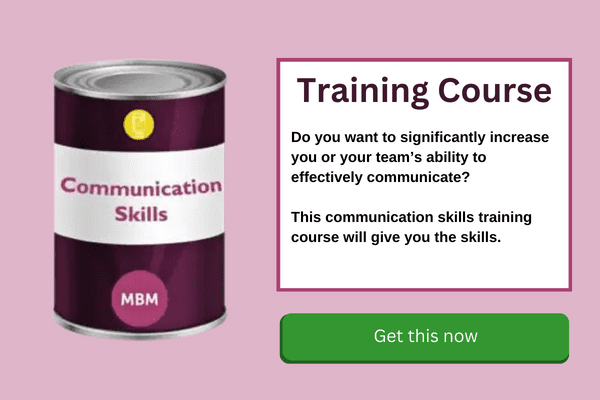Effective Business Communication Starts Here
Internal and external communication in companies happens in one of two ways – formal communication, and two-way, person-to-person. Formal ‘comms’ activity reaches out to large numbers of people simultaneously. Often carried out by in-house specialists, it can invite informal person-to-person communication in response, or not, depending on its purpose. And after the formal ‘comms,’ HR, sales and others can follow through.
This article looks at what internal and external communications cover, and how they are the first step in building relationships in businesses and outside. We consider the importance of knowing what you want to achieve. Internal and external comms need to work together, and we explore why. We look at what’s expected of an in-house head of comms in today’s challenging environment. Finally, we look at how one famous company responded when its employees started agitating about action on climate change. Keep calm and carry on communicating!

Internal and External Communication is a 2-Way Street
Internal communication is what it sounds like, the formal sharing of information within businesses. And external communication involves sharing it with people outside.
This doesn’t happen in a vacuum, of course. People in companies are in constant contact with colleagues in the business and outside, face to face and by phone. They’re also in touch through emails, video conferences, conference calls and the rest. And they use social media. All of this needs to reflect what you’re doing with your formal communication.
Internal comms typically involves:

- Emails.
- Memos.
- Letters.
- Circulars.
- Video conferences.
- Internal websites.
- Conference calls.
And external comms primarily involves:
- Emails, letters and circulars.
- Targeted advertising.
- Press releases and other PR activities.
- Video conferences.
- Company websites.
- Social media.
You Talking to Me?!
The typical list of supposedly internal audiences includes people who are actually on the outside. As well as employees and the company’s management, there are investors, shareholders and past employees. External audiences can include customers, clients, suppliers and the general public. Experts on this also refer to government publics, citizen action publics and local publics. And both internal and external audiences read external-facing comms like social media.
Large companies use online content and social media to communicate with staff. And they often use the same content to communicate with their external audiences too. But there’s no sense in painting a rosy picture in your internal comms, if social media’s awash with negativity about you. Companies need to be credible.
You should see your communication, internal or external as opening the door to making connections, starting conversations and building relationships. Even when you’re writing to consumers about energy price rises, you can take the opportunity to build relationships.
Effective Formal Communication is About Attention, Content and Purpose

Now, let’s look at why it’s important to know what you want your communication to achieve.
When businesses communicate formally, it can feel cold and impersonal to the recipient. But when it’s really effective, they feel more of an insider. To engage people fully, you need to be clear about your communication goals. Write yourself a brief:
- Attention: Who is the audience? What do we know about them? How do we want them to see us?
- Content: Focus on what you want to say. Shape the message you want to get across. Decide the tone of voice, as it affects how people perceive you.
- Purpose: Be clear why you’re communicating, and the outcome you want. If there’s a call to action, spell out what you want, and when. If you’re passing on information, make it clear. Say where people can find more details or ask questions.
Thinking through your communication at the outset like this makes it easier for whoever does it. That’s true whether it’s you, your colleagues or an external agency.
Sticky Learning ® is 7 times more effective than 1-day training courses. Plus, you will get a Chain of Evidence proving your Return on Investment. Discover soft skills training that changes behaviours long term.

12 Good Reasons Why Internal and External Communication Should Work Together
1. Improve Strategic Alignment Among Different Stakeholders
When internal comms tells the internal audience what the external comms guys are working on, they understand the overall strategy. And everyone works better.
2. Handle Sudden Corporate Changes More Effectively
As our Change Management models article makes clear, it’s not easy managing change. But it makes a big difference when internal and external comms work together as one. External comms is often the first point of contact to take company news to the outside world. But employees shouldn’t have to hear bad news through the media!
3. Keep People up to Date on Company News and Industry Trends
Make sure you send the same messages to everyone, including employees and customers – but don’t bombard them! Too much irrelevant information turns people off. Use internal comms tech to allow employees and managers to create personalised news feeds.
4. Generate More Engaging Content
Employees want to hear from internal comms about the company’s achievements and good results. At the same time, external comms often have insights from the company’s customers. If both work together, they can create inspiring customer stories and deliver content employees will engage with.
5. Create a Sense of Teamwork

Internal comms have a strong impact and influence on employees. External comms have a similar effect on current and potential customers. Connecting the two makes everyone feel more positive about the company.
6. Align the Brand Image From the Inside Out
Focusing primarily on external communications means you risk neglecting your internal audiences. The people in the business selling your products or your service don’t live up to the projected image. And the customer experience suffers. So, keep your frontline team in the loop.
7. Turn Employees into Brand Ambassadors
“Employee advocates” help your company get more brand awareness, generate more sales and attract more talent. Encourage employees to do simple things like sharing stories about new campaigns and other positive messages on LinkedIn. This is an easy way to achieve higher levels of engagement.
8. Consistent Internal and External Messaging
This seems obvious. But if you share CONFLICTING information with, for example, employees and investors, you can expect trouble…
9. Build Trust Among Employees and Customers
Again, external and internal comms working together send consistent messages to the different audiences.
10. Get Everyone in Comms on the Same Page
External comms need to ensure internal comms are aware of their campaigns and other efforts. And as we said, internal comms need to communicate external comms’ work to the employees.
11. Build a Strong Community Around Your Brand
Keeping your internal and external comms consistent is critical for building long-term relationships. That goes for your employees, your customers, and everyone.
12. Understanding Your Different Audiences

Internal and external comms need to work together to understand their audience and ensure everyone gets the best possible treatment.
Don’t Shoot Me, I’m Only the Head of Communications
If you’ve got the job of sorting out not just your company’s PR, but your total communications, congratulations! It’s a big ask to get all your ducks in a row, but don’t despair. Here are 9 ‘best practice’ tips to align your internal and external communications:
- Get leadership buy-in.
- Identify your key stakeholders.
- Create brand guidelines.
- Develop and test communication internally FIRST, before doing it.
- Always get Marketing ‘in the room.’
- Connect marketing customers.
- Use consistent branding.
- Empower employees to be brand ambassadors (we’ve said this already, but it IS important.)
- Use the right channels and tools for the job.
It Helps to Have a Clear Policy on This Stuff
As head of comms, you need to establish clear internal and external communications policies. And get leadership to agree to them. These policies set expectations and manage the flow of communications inside and outside the business. An internal communications policy lets you achieve the necessary communication, without having to re-think every time. Similarly, external comms policies and procedures will give guidance on handling information, outgoing or incoming, that’s relevant to the company.
You need to get all this documented, to highlight and acknowledge what information can be shared and communicated, and to who. Such procedures might seem bureaucratic and controlling. But stay positive. Focus on making your job easier, spreading important news and information to the public, your customers and stakeholders.
From there you can devise an internal and external communications strategy and a plan. We talked before about each piece of comms activity making connections, building relationships and starting conversations. Your strategy brings everyone into the conversation. Ideally, it should include not just the activities we’ve talked about, but things like shareholder presentations and customer service.

Communicating With Your Stakeholders
As head of communications, you need to identify the key stakeholders and plan communications with them. Stakeholders might include:
- Leadership.
- Customers.
- Shareholders.
- Investors.
- Suppliers.
- Business partners.
- Employees: depending on the company situation, specific groups may be seen as high priority, like HGV drivers.
You may find your colleagues in other departments are already reaching your stakeholders effectively by these methods:
- Email and e-newsletters.
- Automated email updates.
- Presentations, physical or online.
- Project summary reports.
- Group video calls.
- Informal stakeholder communications.
As head of comms, you need to be up to speed on what they’re doing, and ensure the messages are consistent.
We Need to See if This is Working
Communication takes up time and resources, so it needs to be cost-effective. You can use these key parameters to assess your communication, internal or external:
- Did our target audience receive the communication?
- When/where/how did they access it?
- How much of it did they digest?
- Did they understand what we were trying to say?
- How can we tell?
- How can we make our next interaction more compelling?
Brand teams and people in marketing comms are used to working with external agencies and measuring the results. As this list suggests, evaluation involves more than simply measuring column inches, airtime achieved, click-throughs and posts. But these stats are a good start.
It’s different in internal comms. Insurance company Arthur J. Gallagher’s 2018 survey reveals that 57% of US companies polled didn’t have dedicated internal comms specialists. And 60% of the business professionals said they didn’t measure their internal comms outcomes. There are plenty of specialist agencies for external comms, and fewer for internal comms, because it’s traditionally done in-house.
Here are 5 ways to evaluate your internal comms activity:

- Measure numbers of employees reached.
- Review responses and feedback from employees.
- Monitor employee engagement with the different forms of internal comms.
- Study activity performance using analytics tools.
- Track employee turnover rates (people leave if they don’t feel valued).
I Don’t Think Our Message is Getting Through to Them
We said earlier, effective formal communication involves focusing on attention, content and purpose. Whether it’s internal or external communication, you’re going to come across barriers to communicating with some people. Experts talk about internal barriers to communication, which affect us as individuals. These can include:
- Language differences.
- Motivation.
- Expectations of the situation.
- Past experiences.
- Emotions.
You can address the language differences in a multi-cultural workforce by sending out alternative versions of all-staff memos. And you could have a choice of language options on your internal and external websites.
You and your colleagues will need to address the other barriers in this list on an individual basis. But stay positive. Think back to what we said earlier. See your communication, internal or external, as opening the door to making connections, starting conversations and building relationships. And follow it up with two-way communication and using your listening skills.
Is This Really Internal Communication? Feels More Like External Complication!
External audiences don’t have the inside information or common background shared by the internal audience. So, things SHOULD be better, communicating with your internal audiences. Or you’d think so, anyway. But in businesses spread across different locations, internal communication is more complicated. It’s easy for people in shops in retail chains to feel separated from their head office colleagues. And in manufacturing companies, people working in production sites or distribution centres can feel cut off from the head office.
The lockdowns and life since have been a painful lesson that people working in remote locations can quickly feel isolated. That’s even though they’re key members of the team.
And Finally: The World is on Fire, We’re Just Sounding the Alarm

You can ask your people to respect company confidentiality when things are good, because that’s in their best interests. It ties in with Vroom’s Expectancy Theory: you do what’s expected, and you get the rewards you expect. But when people are upset, they behave unpredictably. Internal and external comms people are used to staying calm under pressure and dealing with these situations.
As an example, we live in an age of activism, and it’s impacting companies and their people. In recent years, some big companies have had employees publicly pressuring them to take aggressive action on climate change. This has taken the form of at least one case of employees speaking at rallies outside their company’s shareholder meeting. Afterwards the CEO told the employees they could be fired if they continued violating the company’s external communications policy.
It’s not known if the company changed its environmental policies later, but that’s not the point. If workers disagree with their employer’s actions or their policies, there are ways to hear their views and minimise confrontation. In challenging times, leaders and managers must show self-awareness and emotional intelligence.
Meanwhile, companies’ internal and external comms programmes are there to serve the company, first and foremost. And people in internal and external communications roles have to deal with problem scenarios as part of the job. Stay present. Keep your internal and external communication consistent and have an open mind, and you’ll come shining through.
Action: For even more useful content on communication, check out our ultimate guide on communication skills.




